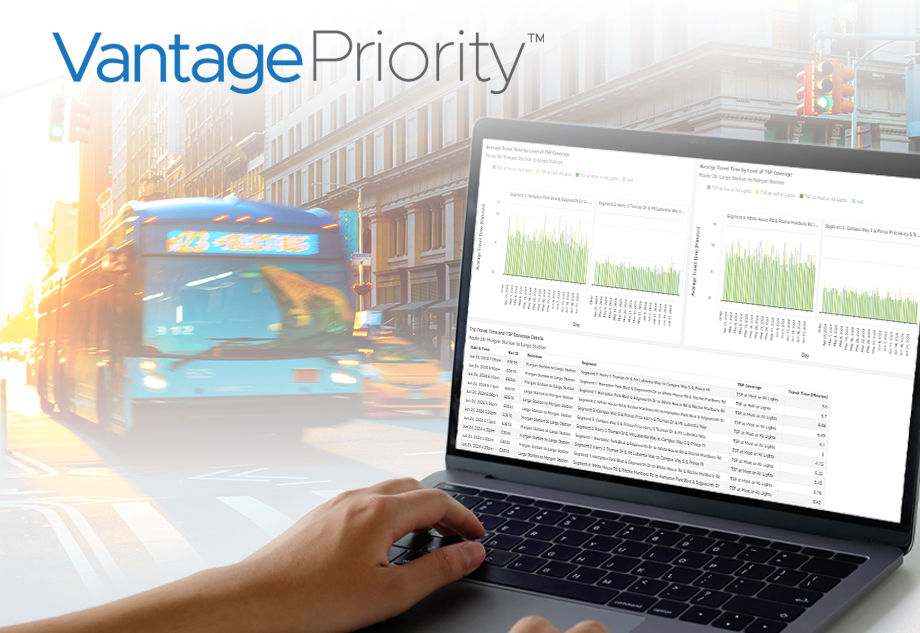
Enhancing Intersection Safety with AI: A Proactive Approach

Intersections are among the most dangerous spots on our roads, often considered critical crash hotspots due to the presence of multiple conflicting movements. Traditional methods of ensuring intersection safety have relied heavily on historical crash data—a reactive approach that demands years of data collection before safety improvements can be implemented. However, advancements in connected vehicle (CV) technology and artificial intelligence (AI) offer a transformative solution, allowing for proactive safety measures.
In this blog, we'll explore how Iteris leverages AI and Machine Learning (ML) in conjunction with emerging CV data to enhance intersection safety. This innovative approach not only reduces reliance on historical crash data but also enables more timely and effective interventions.
The need for a new approach
According to the Fatality Analysis Reporting System (FARS), approximately 25% of all fatal crashes in the U.S. in 2021 occurred at intersections. Traditional safety studies use crash data from the past 3-5 years to identify high-risk intersections. While this method is reliable, it's inherently reactive and slow, as it waits for crashes to accumulate before prompting action.
Emerging CV technology introduces a wealth of real-time vehicle motion data, such as hard acceleration and braking events, granular trajectories, and speeding proportions. By analyzing these data points, it's possible to predict and prevent crashes before they happen.
Leveraging CV data for intersection safety

A recent study conducted by Iteris uses CV event data from the above metropolitan area in Atlanta, GA, covering over 3,800 intersections. The data includes:
- Hard Acceleration Events: Instances where vehicles rapidly increase their speed
- Hard Braking Events: Instances where vehicles rapidly decrease their speed
- Speeding Proportions: The percentage of vehicles exceeding the speed limit
- Intersection Geometry: Geometric complexity of the intersection
- Traffic Volume: Number of vehicles passing through the intersection
These data points are combined with intersection characteristics to develop predictive models for crash likelihood.
Predictive modeling with AI and ML
To predict the number of crashes at each intersection, three models were employed: a traditional Negative Binomial Regression (NBR) model as well as machine-learning models Random Forest (RF) and Extreme Gradient Boosting (XGBoost).
The results indicated that while all models effectively ranked intersections based on crash likelihood, the ML/AI models significantly outperformed the traditional model.
Key findings
The exploratory analysis revealed several critical insights:
- Significance of Hard Acceleration: Hard acceleration was found to be the most significant predictor of crashes, followed by hard braking and traffic volume.
- Correlation with Speeding: Intersections with high crash numbers were also high in terms of hard acceleration and speeding events.
- Predictive Power of ML Models: AI models demonstrated superior predictive accuracy compared to traditional statistical methods.
Proactive safety measures
By utilizing CV event data and AI-driven models, Iteris can proactively identify high-risk intersections and implement safety measures before crashes occur. This approach offers several benefits:
- Timely Interventions: With real-time data, agencies can respond more quickly to emerging safety issues.
- Resource Optimization: Prioritizing intersections based on predicted crash likelihood allows for more efficient allocation of safety improvement resources.
- Enhanced Public Safety: Reducing the reliance on historical crash data means potentially saving lives by preventing crashes rather than reacting to them.
AI integration in action

Iteris implements these proactive models in ClearGuide®, Iteris’ leading transportation analytics software for safer and more efficient travel. ClearGuide uses these AI models to turn raw data into intersection rankings and countermeasures to make it easy for practitioners to find high-risk areas, apply the appropriate countermeasures, and measure their impact, as seen in the graphic above.
For high-risk intersections, Iteris additionally offers countermeasure solutions that combine sensors and data to reduce crashes in real-time. These include Iteris’ Vantage PedSafe®, a pedestrian safety system for reducing pedestrian/vehicle conflicts, Vantage CV™ system for connected vehicle safety applications and at the intersection, and Vantage Vector® detection sensor for reducing red light running.
Overall, the integration of AI and ML with CV technology marks a significant advancement in intersection safety. Iteris' approach demonstrates that proactive safety measures, driven by real-time data and sophisticated predictive models, can effectively reduce crash risks and enhance road safety. As CV technology continues to evolve, the potential for further improvements in traffic safety is immense, paving the way for smarter, safer cities.
By embracing these innovative solutions, we can move towards a future where intersection-related crashes are significantly reduced, making our roads safer for everyone.
About the Author

Masoud Hamedi is Director, Data Science & Analytics at Iteris.
Connect with Masoud Hamedi on LinkedIn
 X
(Twitter)
X
(Twitter)
 Facebook
Facebook LinkedIn
LinkedIn Copy
Link
Copy
Link Email
Email

